Threats
There are three main categories among anthropogenic factors that pose a threat to the Eastern Imperial Eagle. These are factors causing death of adults or fledged individuals, failed breeding attempts and habitat loss.
Factors causing death of adults or fledged individuals
Poisoning
Poisoning, being probably the most severe problem at present, occurred first in 2005. Back then, two Eagles were found dead by unknown reasons, but later were revealed to have been poisoned which had been unprecedented since the 1970’s. At that time, we thought this to be a sad individual case. Unfortunately, we proved to be wrong, and a series of persecution started what we had never experienced earlier.
Poisoning with chemicals belongs to two main categories: the first one is by the misuse of permitted, non-selective rodenticides and other poisoning chemicals, i.e. mixing of different chemicals, which enhances the effect of each other. It is not considered a direct poisoning. In cases like this, poisoning aims to kill rodents, however, after consuming poisoned prey Imperial Eagles may become infertile, get weak and die by accumulation of the poisoning agent (secondary intoxication), and also make their chicks sick leading to death. It is called secondary poisoning. The other main group of cases consists of the use of non-permitted, illegal poisons, which is considered to be direct poisoning. It usually aims the „unwanted” carnivores and birds. Hungary is on the top of the list of direct poisoning among the European countries.
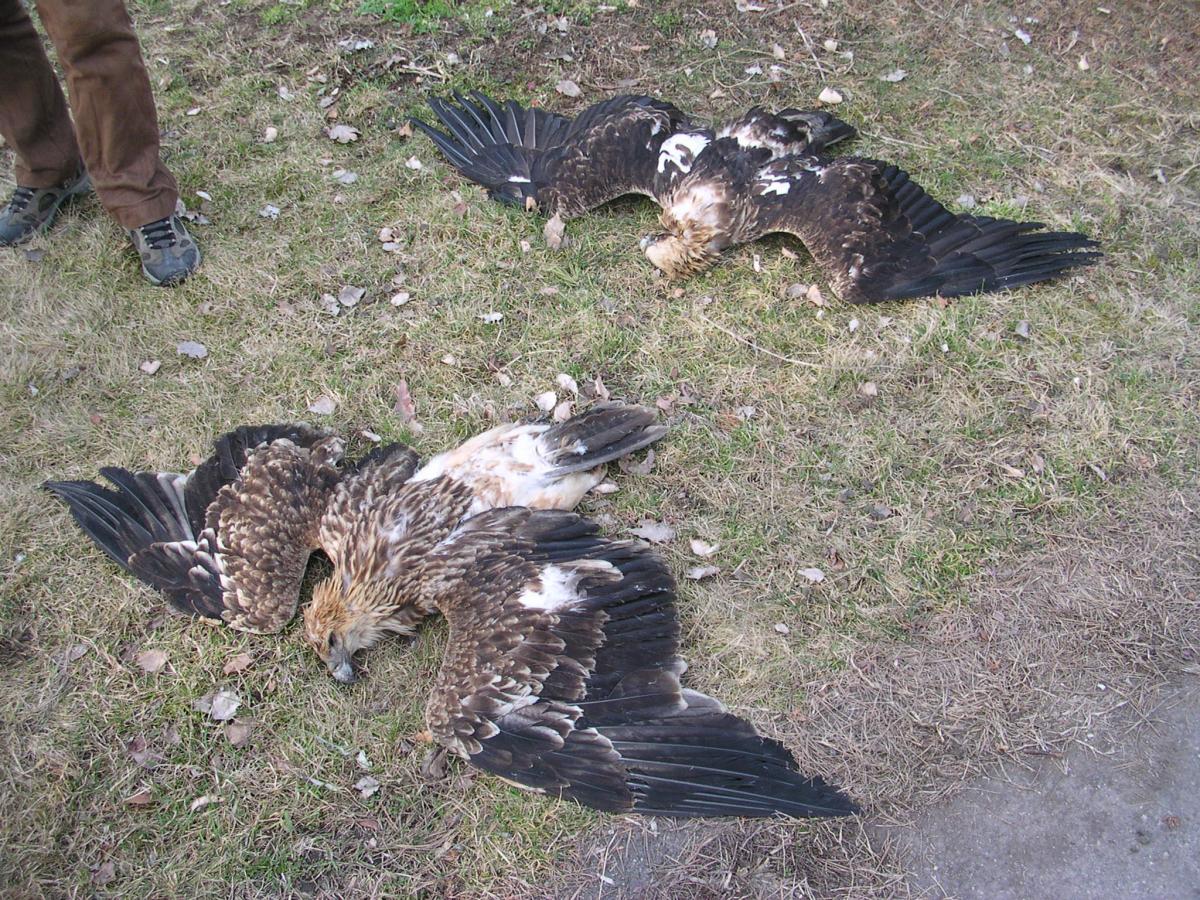 |
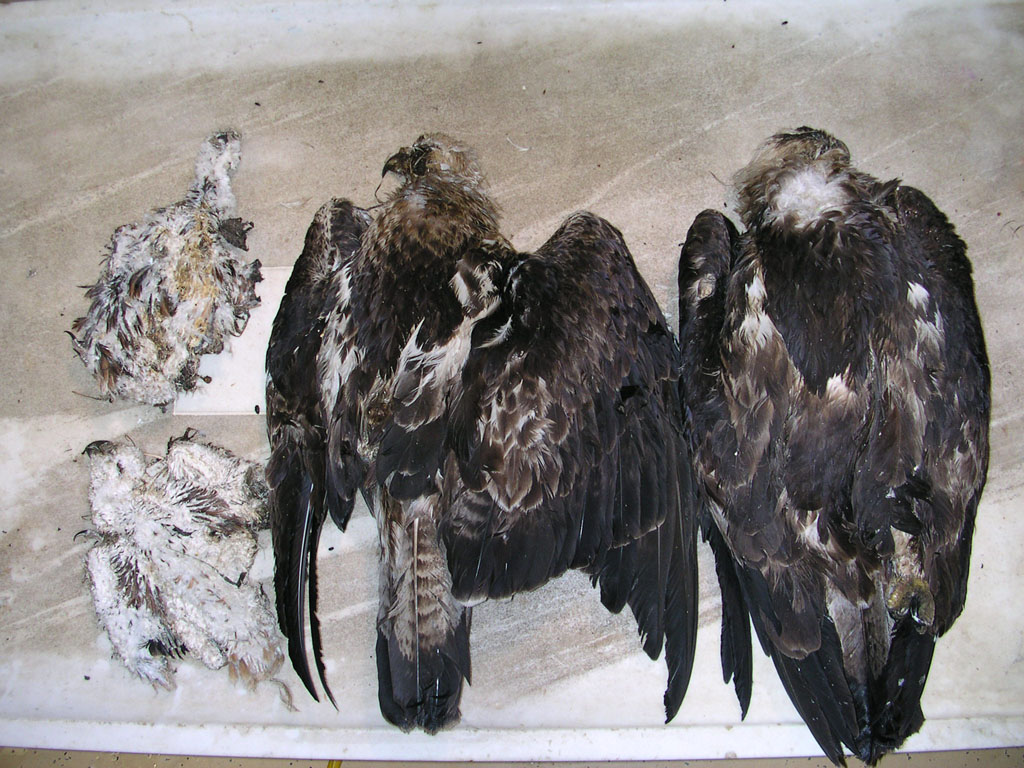 |
Poisoned imperial eagles (Photos: Márton Horváth)
Lead poisoning is supposed to be another possible threatening factor, however, its frequency is unknown. Several studies showed that lead bullets developed intoxication in birds of prey. Consumed lead can cause poisoning in any age-groups. Eventually, the lead accumulates in the bones. In the case of the breeding population, after laying the eggs, the lead can get mobilized from the bones and do further damage.
Poisoning can affect the whole Hungarian population in core areas, foraging places and temporary settlement areas, as well. Whereas, weak or dead birds are rarely discovered, negative effect of poisoning is certainly in the order of higher magnitude than we could expect it from recoveries.
Shooting
Being shot with pellets, eagles may die immediately or later due to the injury. Sometimes, the bird islucky and the pellets get encapsulated in the body causing no furher problems. Shooting can affect all age-groups from eggs to adults. It is hard to assess the significance of shooting, but it can happen in nesting areas, foraging places, as well as temporary settlement areas all year round.
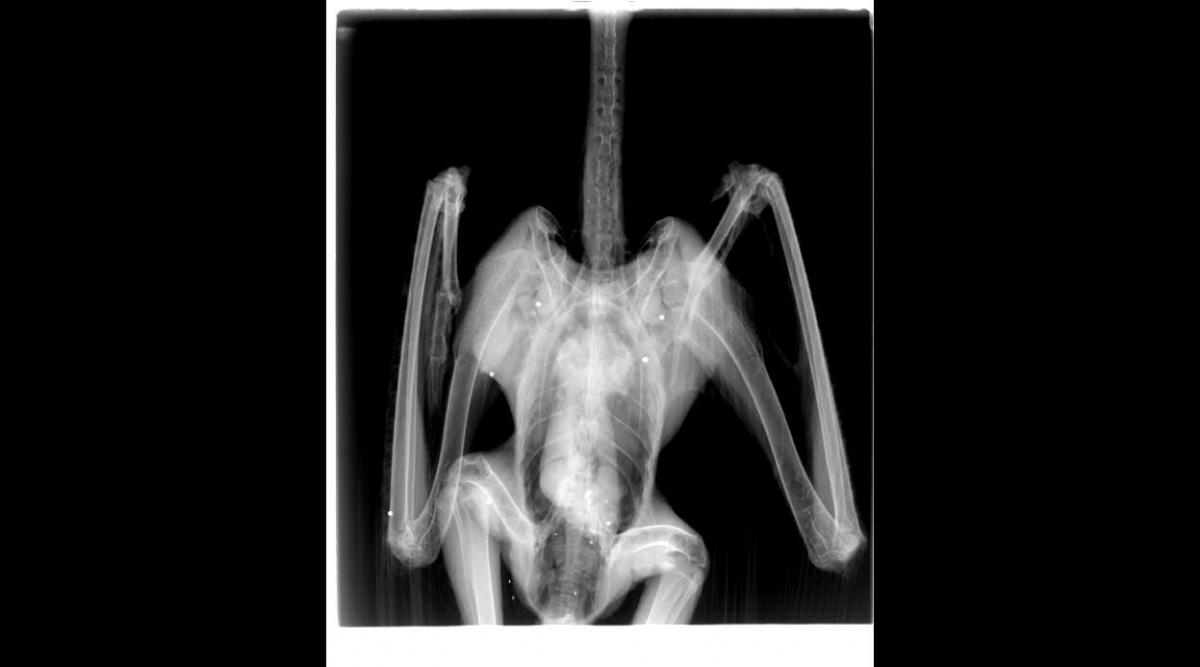 |
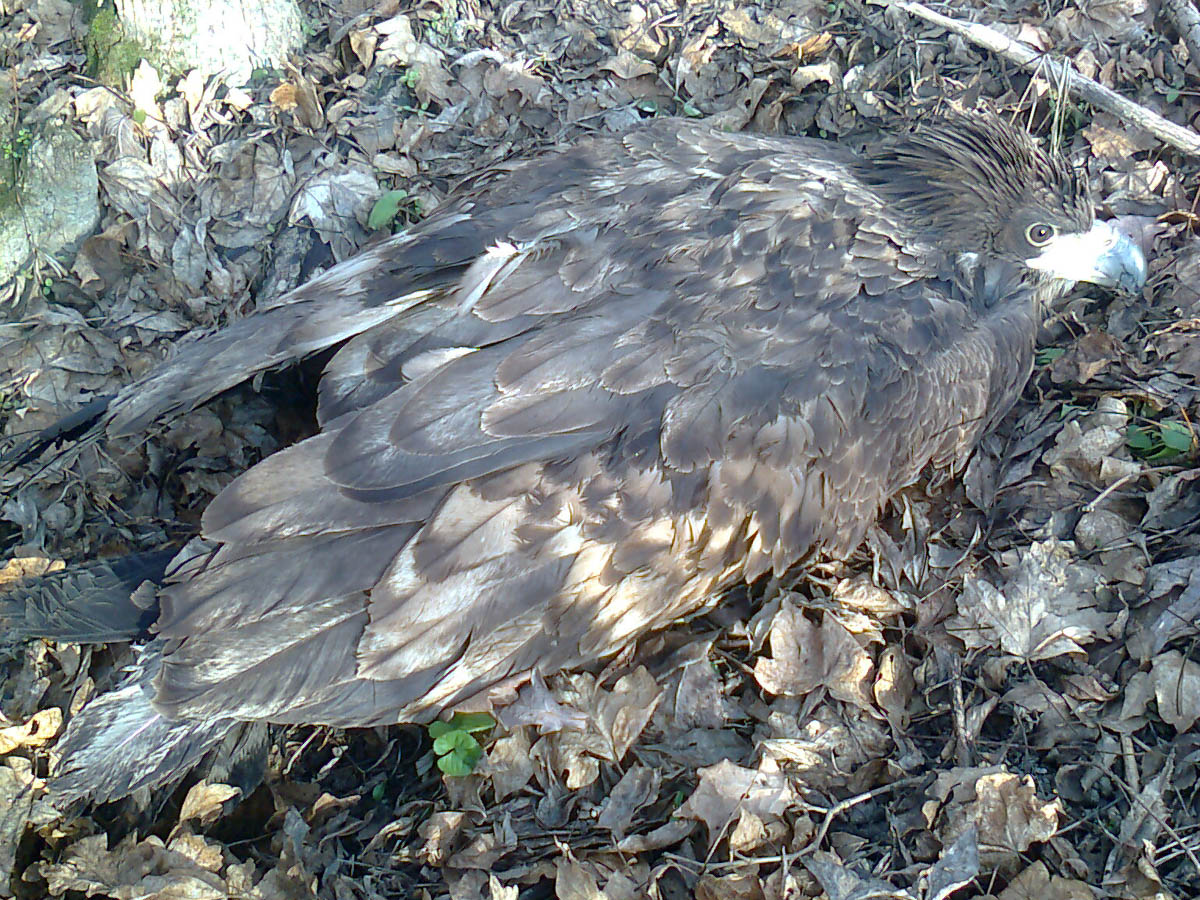 |
Shot white-tailed eagle (Photos: Budapest Zoo, Péter Barcánfalvi - HNP archives)
Traffic accidents
Unexperienced immatures can get hit on public roads or railways. This kind of threat is rare, however, there have been some cases lately. Most often they crash with vehicles when flushed off a carcass close to the road. Accidents with trains can occur in cases, when the pair nests close to the railway. After fledging, young Eagles often sit on the ground. Since the railway embankment is at higher ground, it is probably very attractive to them.
Electrocution
Medium voltage powerlines (20-35 kV) pose a serious threat to birds. When a bird lands on the pylon, it can easily get electrocuted by touching two wires or a wire and the grounded part of the pole at the same time. The bigger the bird, the higher the chance for this to happen, though small raptors (Kestrels) die in high numbers, as well. In most cases, electrocution causes immediate death. Young birds are more prone to this threat than adults. The total length of the medium-voltage powerlines in Hungary is over 50.000 km, which means more than 600.000 pylons. From the conservation point of view of the Imperial Eagle .This threat is considered to be widespread and not yet understood in details, and due to the large number of potentially lethal pylons it is hard to assume how dangerous to the Hungarian population.
Due to the irregularity of powerline surveys, we do not have enough data to estimate yearly mortality rate. Altogether, we could obtain data of eight individuals in the past ten years, of which 3 birds were discovered during the first nationwide powerline survey organized by MME.
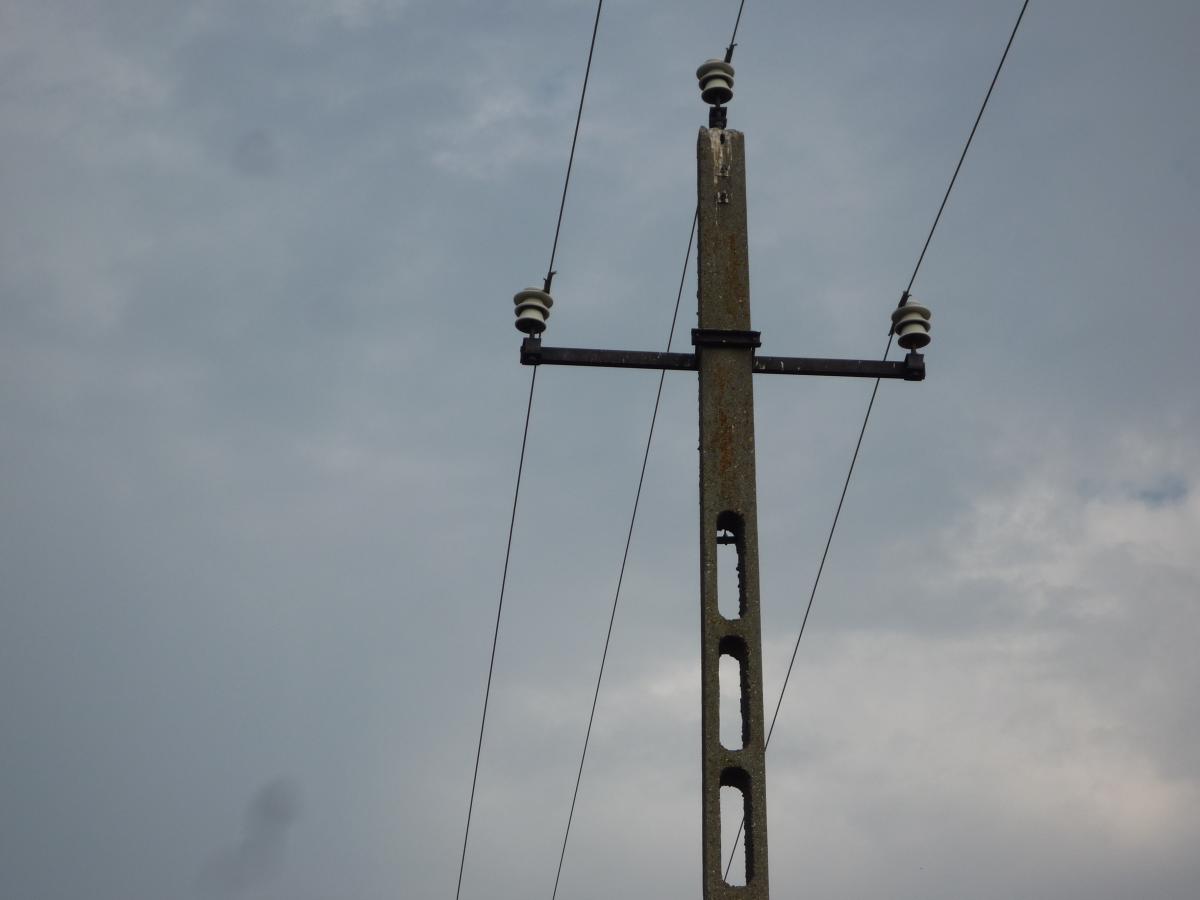 |
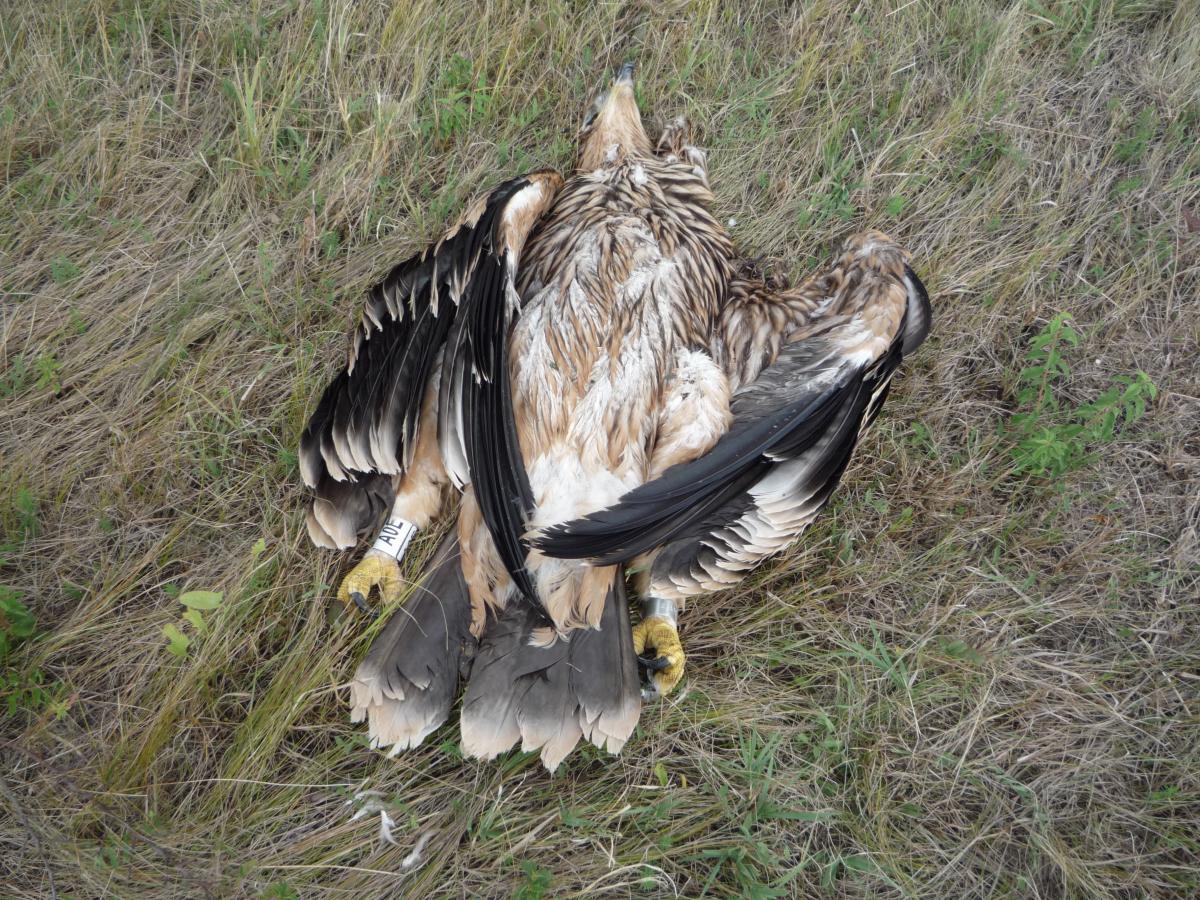 |
Electrocuted (Photos: Imre Fatér)
Failed breeding attempt
Nest-robbing
Robbing for commercial purposes and own account have to be differentiated. Egg and chick robbing for collectors or falconers belong to the former, when the plunder can be marketed abroad, as well. The latter usually occurs, when local people (many times kids) take the eggs or the youngsters home without having any knowledge of the species. Emptying a nest bereaves the population of a clutch for that particular year, unless the pair starts a second clutch, which can happen if the robbing occurs at an early breeding stage. Illegally kept birds usually die lacking expertise and special conditions they require in captivity. Fortunately neither nest robbing nor catching of fledged Eagles is frequent, even though, it happens occasionally. Legal protection of birds of prey is well known by the public, that makes keeping birds in captivity or trading them internationally hazardous.
Disturbance
Human disturbance is considered to be the most important threat to breeding success. Estimates put failed breeding attempts around 15% per year by human disturbance. Due to disturbance, Eagles tend to avoid large areas (including foraging, settlement and nesting areas) periodically. The main adverse effects are as follows:
- ordinary use of territory changes both in time and space, which means that birds may spend more time in sub-optimal habitat,
- change of nest site, less suitable site may be chosen,
- leaving the clutch, which perishes due to adverse weather conditions or predation,
- behavioural changes at chick-rearing stage, (e.g. less frequent feeding), negative effects on energy balance caused by less food and stress,
- chicks may jump out of nest or fledge earlier than they are supposed to,
- extreme cases can lead to territory desertion.
All in all, the most important negative effects are the lower breeding success and the individual mortality.
Habitat loss
Lack of suitable nesting trees is a serious problem for the species regardless where it breeds, in the mountains or the lowlands. In wooded areas old stands are threatened most by logging, since those bring huge profit for the forestry. The situation is the worst in places that are not protected. Here, the nature conservation’s interest can hardly be put into effect even in cases of strictly protected species. Illegal logging threatens shelter-belts, groups of trees or lone trees in the lowlands.

